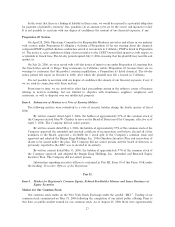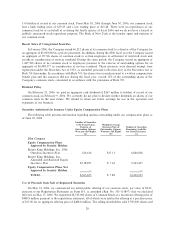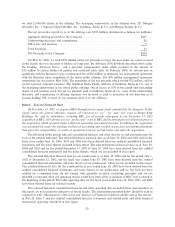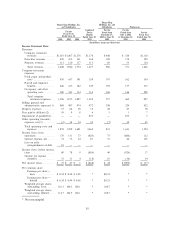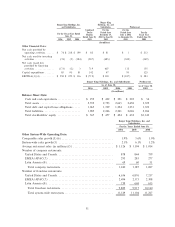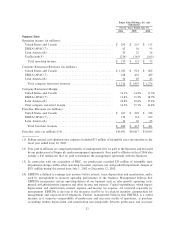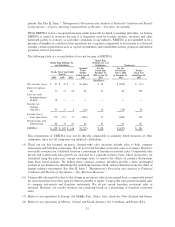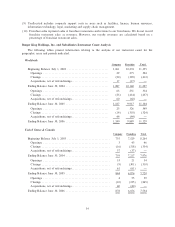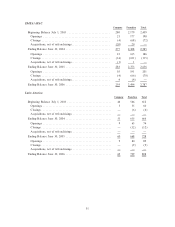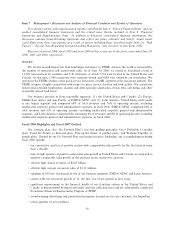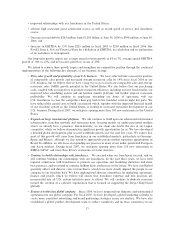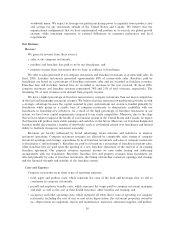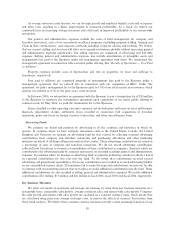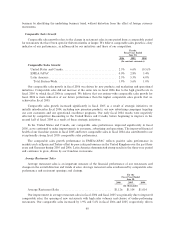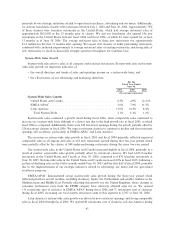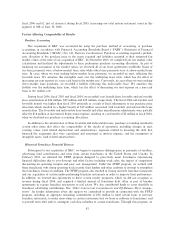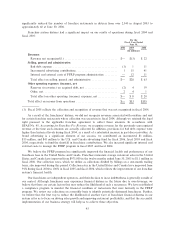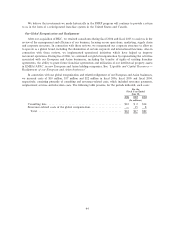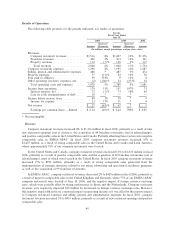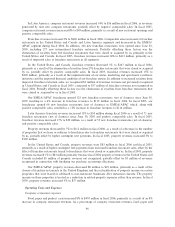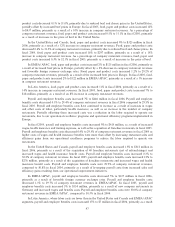Burger King 2006 Annual Report Download - page 49
Download and view the complete annual report
Please find page 49 of the 2006 Burger King annual report below. You can navigate through the pages in the report by either clicking on the pages listed below, or by using the keyword search tool below to find specific information within the annual report.‚ improved relationships with our franchisees in the United States;
‚ all-time high restaurant guest satisfaction scores, as well as record speed of service and cleanliness
scores;
‚ Decrease in total debt by $285 million from $1.283 billion at June 30, 2005 to $998 million at June 30,
2006; and
‚ Increase in EBITDA by 15% from $225 million in fiscal 2005 to $258 million in fiscal 2006. See
Part II, Item 6, Selected Financial Data for a definition of EBITDA, its calculation and an explanation
of its usefulness to management.
Our long-term growth targets are: average annual revenue growth of 6% to 7%; average annual EBITDA
growth of 10% to 12%; and net income growth in excess of 20%.
We intend to achieve these growth targets and strengthen our competitive position through the continued
implementation of the following key elements of our business strategy:
‚Drive sales growth and profitability of our U.S. business. We have achieved nine consecutive quarters
of comparable sales growth and increased average restaurant sales by 14% since fiscal 2003 in our
U.S. business, but we believe that we have a long way to go to reach our comparable sales and average
restaurant sales (ARS) growth potential in the United States. We also believe that our purchasing
scale, coupled with our initiatives to promote restaurant efficiency, including our new batch broiler, our
improved labor scheduling system and our kitchen minder platform, will further improve restaurant
profitability. We will continue to emphasize extending our hours of operations with our
U.S. franchisees to close the competitive hour gap both in the breakfast and late night day parts. We
have reduced the capital costs to build a restaurant which, together with the improved financial health
of our franchise system in the United States, is leading to increased restaurant development in our
U.S. business. During fiscal 2007, we anticipate opening more than 100 new restaurants in the United
States.
‚Expand our large international platform. We will continue to build upon our substantial international
infrastructure, franchise network and restaurant base, focusing mainly on under-penetrated markets
where we already have a presence. Internationally, we are about one-fourth the size of our largest
competitor, which we believe demonstrates significant growth opportunities for us. We have developed
a detailed global development plan to seed worldwide growth over the next five years. We expect that
most of this growth will come from franchisees in our established markets, particularly in Germany,
Spain and Mexico, although we also intend to aggressively pursue market expansion opportunities in
Brazil. In addition, we will focus on expanding our presence in many of our under-penetrated European
and Asian markets. During fiscal 2007, we anticipate opening more than 250 new restaurants in
EMEA/APAC and more than 80 new restaurants in Latin America.
‚Continue to build relationships with franchisees. We succeed when our franchisees succeed, and we
will continue building our relationships with our franchisees. In the past three years, we have held
regional conferences with franchisees to promote our operations and marketing initiatives and share
best practices, and we intend to continue holding these conferences in the future. We have established
quarterly officer and director visits to franchisees, which have more closely aligned the people in our
company to our franchise base. We have implemented advisory committees for marketing, operations,
finance and people, which we believe will ensure that franchisee expertise and best practices are
incorporated into all U.S. system initiatives prior to rollout. We will continue to dedicate resources
toward the creation of a cohesive organization that is focused on supporting the Burger King brand
globally.
‚Become a world-class global company. Since 2004, we have integrated our domestic and international
operations into one global company. For fiscal 2007, we have developed a global marketing calendar to
create more consistent advertising and brand positioning strategies across our markets. We have also
established a global product development team to reduce complexity and increase consistency in our
37


